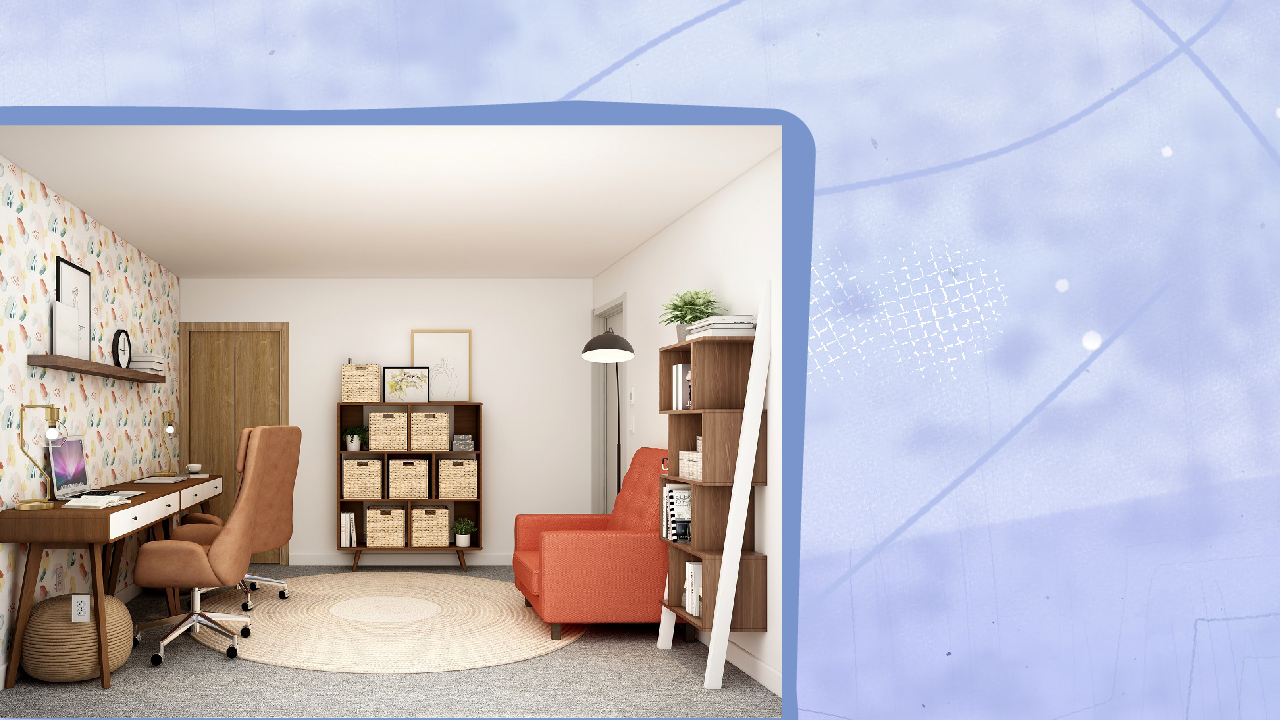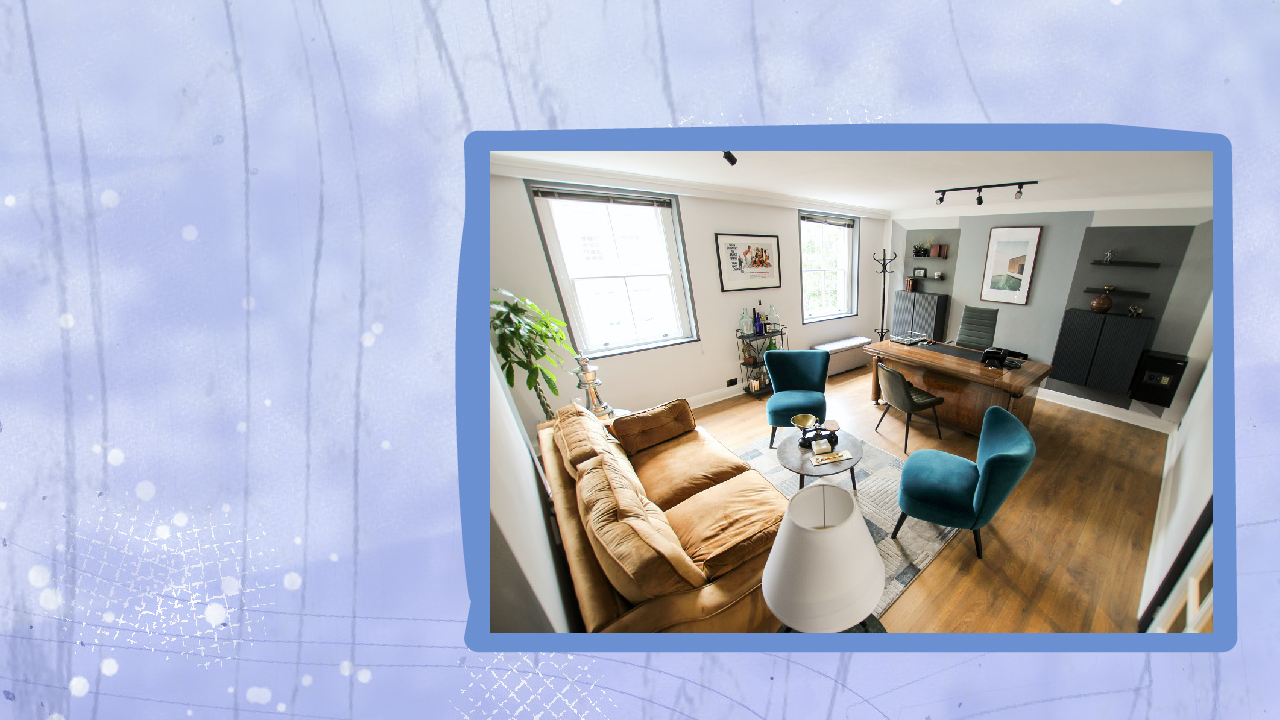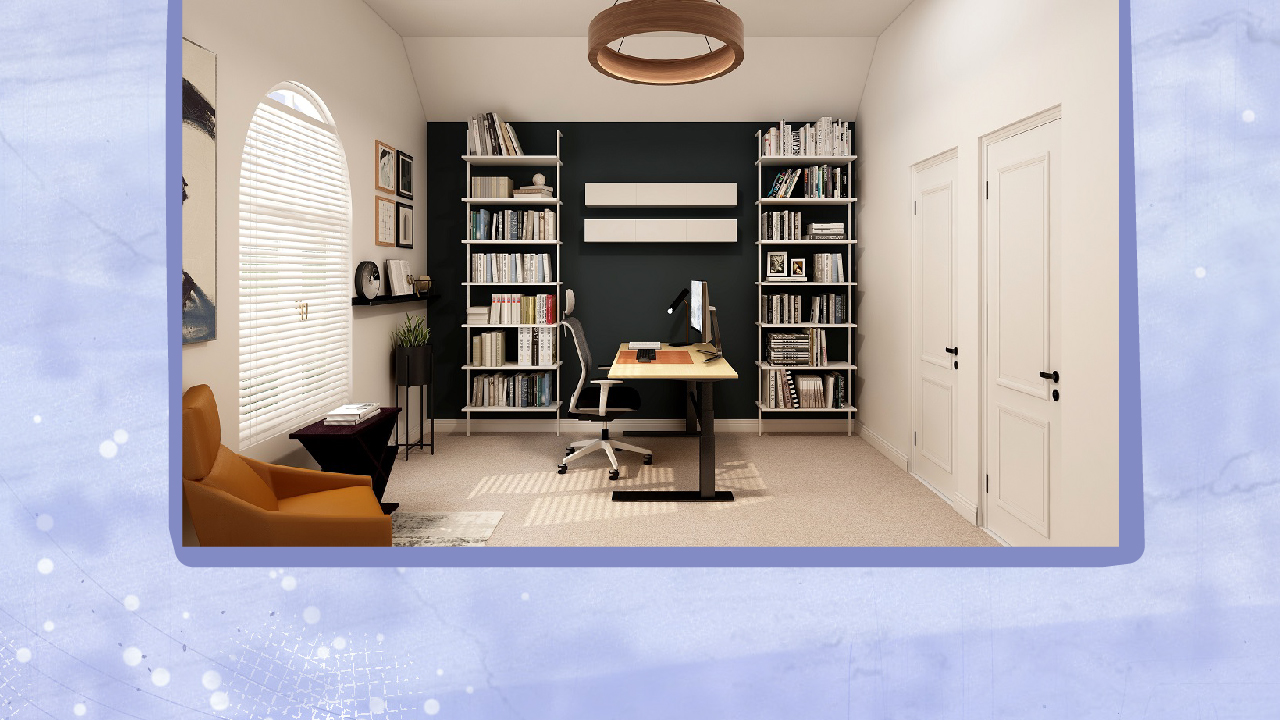Working from home can come with noise, insufficient space, less natural light, and no privacy. However, building a dedicated home office with the best home office desk and allocated space for other furniture can solve most of these problems.
The most important step in the process is to determine the right home office size for you. To help with that, here’s my detailed guide on how much office space you may need.
What Is The Right Size For A Home Office?

While the standard size for a home office can be anywhere between 100 to 150 feet with 12 x 14 ft dimensions, the right home office size for you may be different. A programmer may require extra space to accommodate multiple computer screens and office equipment, whereas a professor may need more space for books.
However, I can get by using a smaller home office space with efficient storage solutions. So, the size of your home office depends on the work or business you will do. And my list below includes the average home office size for different home and work requirements:
1. Small Home Office
A small office is adequate for one-person projects, solo business, and content creation like YouTube videos, etc. The standard setup for an individual will require a smaller space of 20 to 50 feet, which should provide enough space for storage and open workstations.
If your house does not have an extra room to accommodate these dimensions, you can consider other ways to create space. For example, you can partition a bedroom like I did or divide the dining room into two, if possible. Having a separate room for office space is not always mandatory!
2. Medium Home Office
Medium-scale businesses or work operations like solo law practice or an online distributor’s office can operate in a medium office space. A 50 to 100 square feet area with 8×10 ft. office space should be large enough to fit a large office desk and spare space for storage. Ideally, it should have enough space for multiple chairs, file cabinets, and specific spaces for other office tasks.
Tip
If you don’t have a room with these specifications, consider dividing a large room into an office and a regular guest room. You can also use the other space for conference rooms.
3. Large Home Office
A business venture that requires major changes in the work environment might require larger office spaces. You may also require a space upgrade if your business is expanding. In this case, a 100 to 200 square feet room is enough to allocate space for a home office.
Usually, the average size of a room in the U.S. is 200 square feet, so using a spare room for your home office will do the trick. But if you don’t have such a room, use the largest available space in your home. This space will include open workstations, storage space, and enough room for relaxation and creative work with ample natural light.
What You Will Need For A Home Office Space
Moving on, you will need to decide what furniture is required to suit your daily work and home life. A home office setup typically includes an office chair, a work desk, storage, and natural light for better productivity. Read below as I explain each component for the perfect work environment and how to fit them into a standard home office size.
Tip
I recommend a home office setup with built-in storage and file cabinets to give the office space a tidier look.
1. Choose The Right Chair Size
Choosing the right office chair can be challenging, given the endless debate between utility and style. While aesthetic and minimalist chairs look great, they provide little to no body support for facilitating comfortable work hours. On the other hand, some people prefer an oversized chunky chair with good posture support. So, you will have to decide the best option for you while keeping in mind considerations such as material and durability.
I think choosing an ergonomic office chair with good back support and hand rest is the right option. However, many changes must be made in the office space to fit a chair like this. For example, if you have a small office, choosing a corner for the chair that will offer enough room for your legs will be suitable.
Moreover, the chair and the specific space for workstations have to be adjusted according to the person’s height and weight for optimal utility.
2. Select The Appropriate Desk
Knowing the different types of home office desks before creating your office space is essential. From these types, you need to choose the desk that best compliments your chair, office size, and overall aesthetic of the space.
The home office desk should have enough legroom and a sprawling space for your computer and other work equipment. A desk with a 30-inch height is generally considered standard, regardless of the square footage of the room. And since working remotely has perks like flexible timings, you need not require a large permanent workstation.
So, purchasing a small yet flexible unit with a suitable height will create spaces for other accessories. Other alternatives include foldable, laptop, and L-shaped office desks for corner areas. Moreover, standing desks are becoming very popular for utility, space-saving, and better posture.
Finding the right desk size depends on the space taken up by computer parts like a mouse and keyboard, landline phones, books, and binders. Ensure there’s ample space for you to write comfortably.
3. Fit Your Storage In The Office Space
It is crucial to consider the height and depth of your preferred storage solutions to organize your home office space efficiently.
I like to allocate different spaces for my laptop, electronic accessories, notebooks, and office supplies to easily wrap things up in the evening and use the space as a home theater. You can do something similar or include shelf space for a more clutter-free work environment.
For a small home office, built-in shelves and furniture with multiple drawers are useful. This will also make the space look bigger. Hidden storage is another alternative for small home offices–including hidden plug sockets and built-in wall desktops to make space for other activities.
Using hidden storage solutions, you can strategically place comfortable furniture like sofas, coffee tables, and TV sets.
4. Use Natural Light To Alleviate Your Space
Using light to create an illusion of space is a clever trick for every remote worker. Home offices with limited space can greatly benefit from natural lighting. To maximize the illusion of space, place your home office near an open window for better lighting and air circulation.
Additionally, use wall-mounted light fixtures that take up less space yet illuminates a broader area. And place them in the common areas of the room to decrease their artificiality. For the desk, however, use an angled digital study lamp to focus light on your workstation.
5. Utilize The Corner Of The Room
If you’re on a tight budget, consider utilizing the corner of your room for building a pop-up home office setup. These spaces, like areas under the stairs, hallway corners, and extra closet space are very advantageous if you don’t have a separate room.
Creating a home office space in the central part of the house, like the guest room, bedroom, or hallway, requires good planning. For example, building a central cabinet with built-in shelves, a compact desk, and an optional bed for a reading nook can be an excellent idea.
This way, you can have a separate working space without a home office deduction. Also, placing this opposite the bedroom window will provide better lighting.
Different Home Office Layouts

Besides office furnishings and utility space, choosing the room or space you want to work in is important. I recommend choosing the largest room with a good view and natural lighting. However, depending on the shape and size of the house, you may have to make certain compromises. Briefly speaking, these are the typical home office layouts:
1. Dedicated Space For Home Office
Most people prefer a separate space for work since it increases focus, removes distractions, and helps create an ideal work-life balance. In these home offices, the position of the desk plays a key role in utilizing the available space. I prefer placing the desk near a window with automated blinds for controlled light and privacy.
To make the space more welcoming, add seating arrangements like cozy sofas or makeshift couches for breaks and naps. This arrangement requires a minimum area of 150 square feet. However, arranging a separate room can cost you a lot.
2. Home Office In The Bedroom
Adding a home office setup to a bedroom or guestroom is an excellent solution for a lack of space. Since the bedroom is relatively more peaceful, having an attached home office is quite popular. However, you should arrange it in a way that doesn’t seem like you’re living in it.
Tip
Choose an area in the room that has a more secluded corner or is at the periphery of the room.
Having no division between your sleeping area and the home office is a leading reason for work-from-home burnout. To prevent this, use a large divider or screen to visually remove your workstation from the bedroom and vice versa.
Another area in the bedroom that you can utilize for office space is the closet. Closets can not only act as a storage solution, but they can also be used as an entire home office.
3. Utilize Your Dining Room
Dining rooms are the most dynamic areas of the house. Besides eating dinner, I’ve seen several people working on their projects or helping kids with homework in a dining room. This room can easily fit five to ten people because of its varied seating arrangements.
Until recently, I used my dining room table for work purposes, so I can vouch for its usage. A dining room can be an appropriate place for squeezing in a home office, and if you need extra privacy, add a screen divider!
4. Home Office In Unusual-Shaped Rooms
Not every room has a perfect square or rectangular shape, and that’s okay. Using an L or T-shaped room for a home office may be challenging, but you can make that work with proper space utilization.
Your best bet will be to set up the office space near power outlets and use specialty desks to fit into narrow alcoves. Multi-purpose cabinets and built-in shelves are great ways to optimize an irregularly shaped room. However, you can also choose to use an alcove or jutting space for storage and shelving books.
What To Do If You Don’t Have Enough Space?
It may happen that you don’t have enough space in the house to create an office, and buying a separate office will not save money. In this case, you must get creative and utilize every nook and cranny available.
There are many ways through which you can redefine your living area, however small, to build a workspace. I have seen some people use unusual areas such as the balcony, closet, or narrow passageways for a DIY office space. Moreover, you can spread out the office area throughout different rooms by utilizing each room for storage requirements, workstations, and other ancillary projects.
A staircase landing or mezzanine can provide a brilliant area for setting up a home office.
How Much Can It Cost To Create A Home Office?
Creating a home office is more lucrative than renting office space since it helps with a tax deduction and saves money in the future. The average cost for setting up a home office can range from $100 to $5000, depending on the furniture and office tools.
However, there are several factors to consider while setting up a home office, including material and construction expenses. Let’s look at different home offices for varied budgets:
1. Small Budget Home Office
If you have a tight budget, stick to the office essentials only. These include your computer, desk, chair, internet router, printer, and makeshift storage spaces. Also, consider using existing home furnishings to save money.
2. Medium Budget Home Office
Spending around $500 to $800 on the office space can provide adequate comfort for long working hours. Buy an ergonomic chair and high-quality desk instead of tacky furniture that clash with your home decor. Besides the office essentials, you can add a fire safe, file cabinet, and a comfy couch.
3. Luxury Home Office
This setup can cost up to $3,000 and include a premium wood desk and multiple elegant seating arrangements. This budget can also accommodate designer storage racks, wall art, automatic lights, and high-quality blinds. It can include extra features like power backup, bookshelves, and a home theater.

Average Size Of A Home Office Final Thoughts
A well-organized and aesthetic home office can guarantee greater productivity and work satisfaction. With several online markets and guides available, you can now build your own home office in a few steps.
Before setting it up, however, consider the different parameters, as mentioned in the article, such as room size, budget, furnishings, etc. I find dividing rooms very lucrative, especially if you wish to spend less. Some may also prefer hiring interior designers for a more aesthetic working area.
I hope this guide helps you correctly calculate home office size. If you want to read similar informational pieces, check out my article “How To Make Your Office Desk More Ergonomic.”
That said, I’ll be signing off now. Happy hustling!


